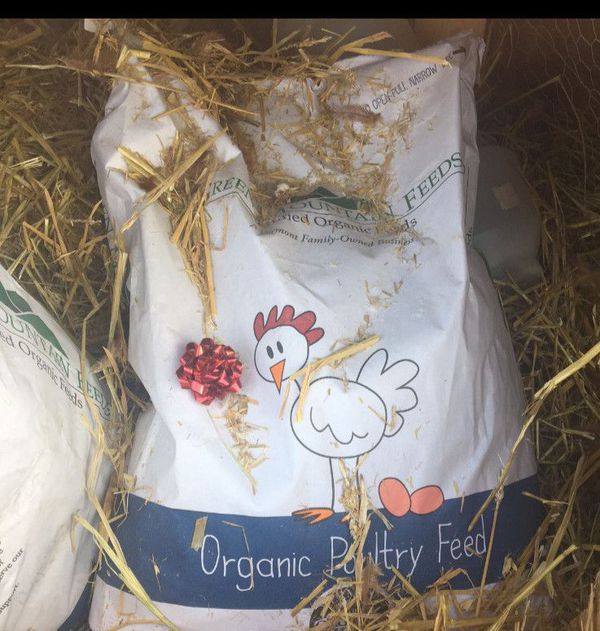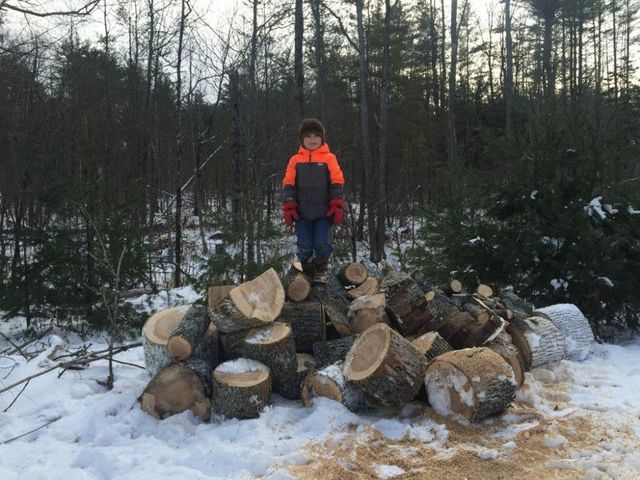After my first series, I realized how much I liked its sequential format. It allowed me to not rush through describing our daily homesteading life. We do so much on a monthly basis, it would be easy for me to get lost in the details, rushing through as fast as I can through what I want to say. This will be the start of a new series, a monthly newsletter of what we have been doing, on our 50 acres of beautiful Vermont, without rushing through it, giving you a piece of our homestead at a normal pace.
November on our homestead is the last month before winter to finish projects we have been putting off since last winter. The fact that I am releasing the November newsletter at the end of December is telling of how much we needed to accomplish before the cold arrived. December on the other hand has been reasonably slow and we haven’t started any new projects, therefore I am adding December to the mix. I’ll get right to what my family have been up to these past few weeks.
Water
Back in March, we had enough money saved up to work on getting water closer to the house (Living without Water). We hired a well drilling company, and after several hours of drilling deeper and deeper into the earth, water started coming up, when the drill reached 385 feet down below. Water came up at a rate we deemed satisfying for our usage. We installed a Bison hand pump to cover the well. We had one issue: the aquifer had enough pressure to force a constant flow at the top of the well, about 2 gallons an hour. We knew for months that at some point before winter, we would need to take care of this issue: the water would eventually freeze and damage the casing and the pump if we allowed it to keep coming out at the top. To remedy this, we needed to dispose of the water before it reached the frost level, about 6 feet down.
We hired someone to dig a long trench: the idea is the be able to tap into the overflow near the animals and the house for consumption
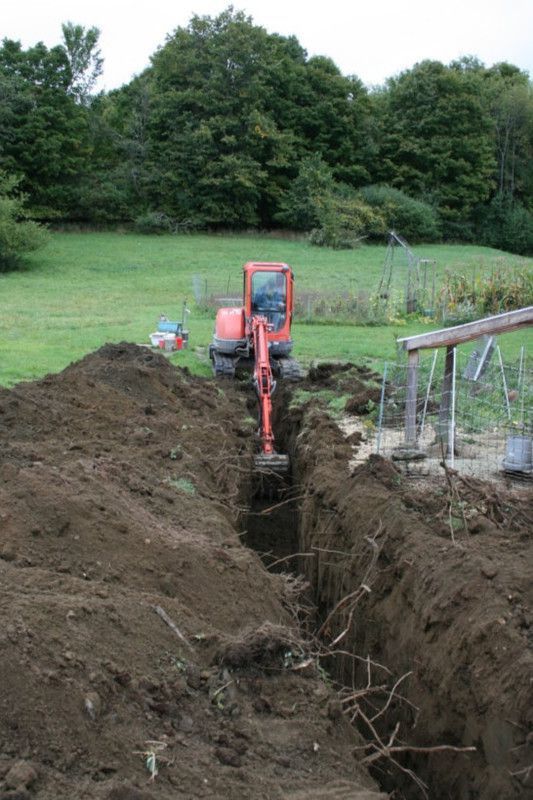
150′ of black pipe, connected to the casing 6′ underground
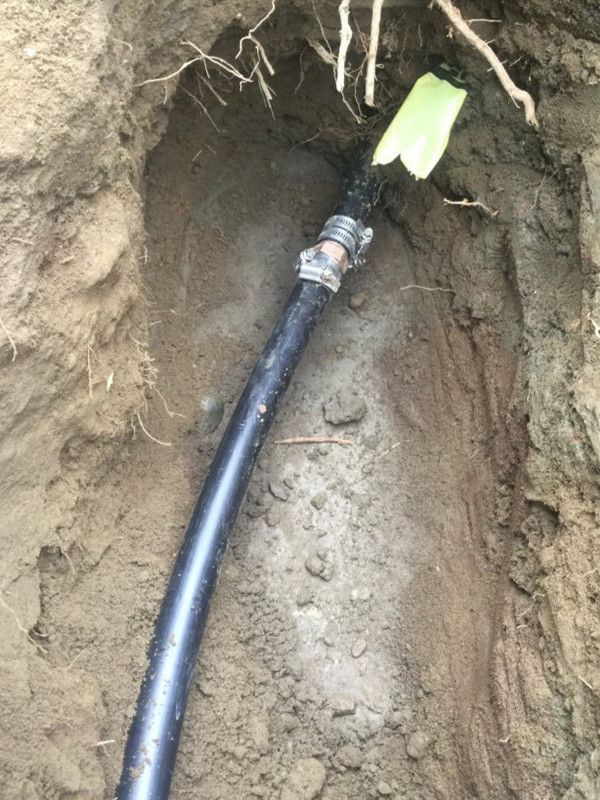

Building a small leach field

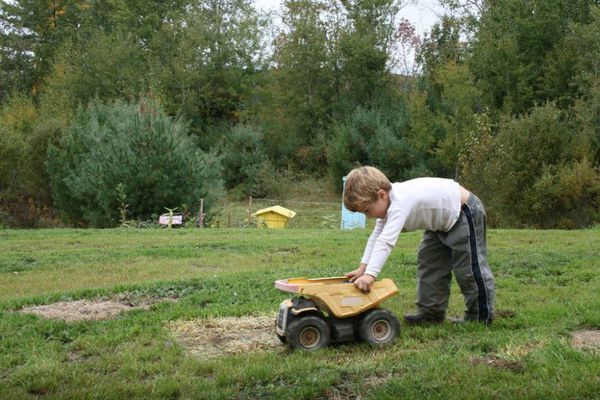
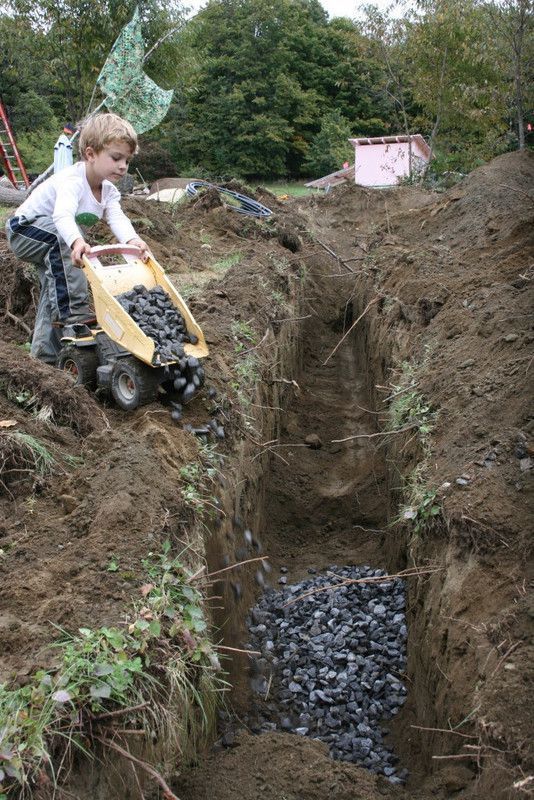
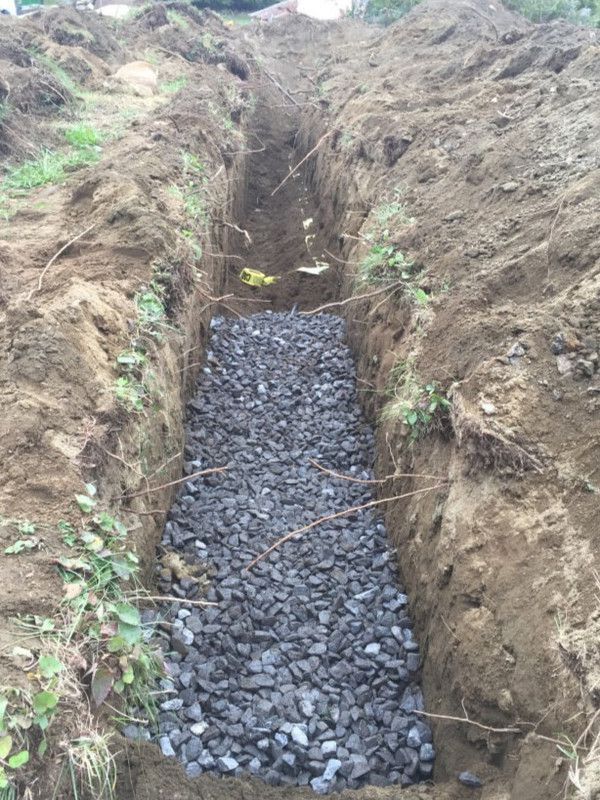 (We helped a bit)
(We helped a bit)
Testing the system
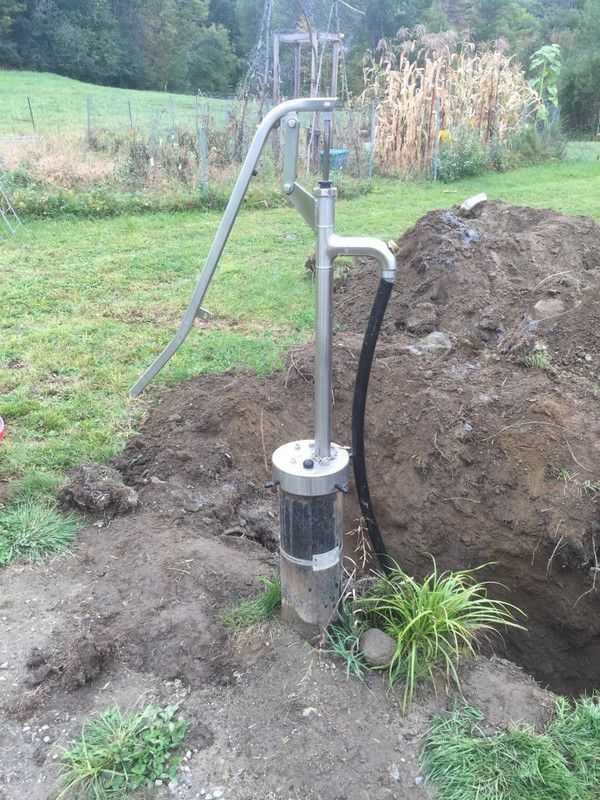
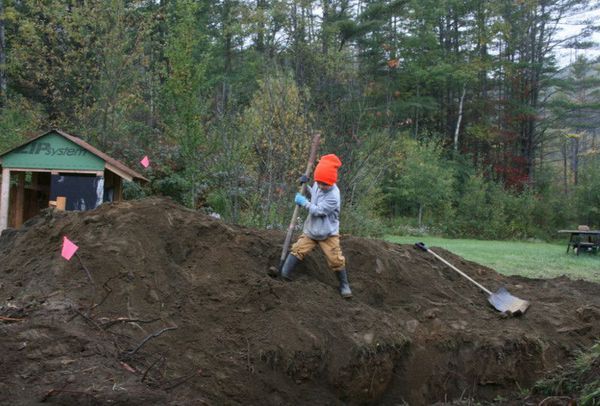
Our hand pump is our only access to potable water. Even though it is rugged and requires no maintenance (very well-made in Maine), we wanted to build something around it to shield it from the harsh winter, but also to make our water chores a bit more pleasant. With little time ahead of us, we picked an easy to build semi-temporary greenhouse. We liked the idea of combining under one roof two functions that are vital to our adventures: water and growing plants.
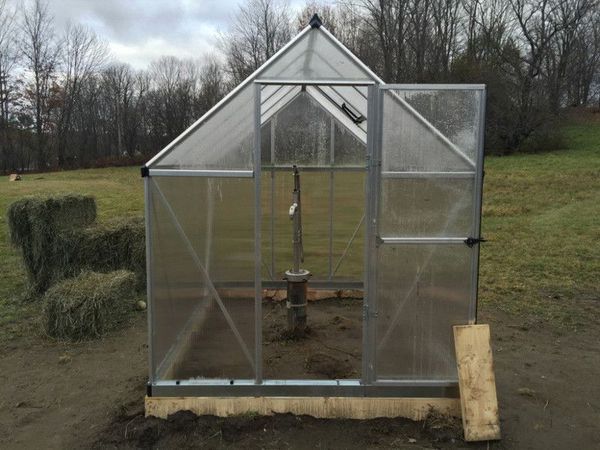
After a month of usage, the greenhouse has met our expectations. It has shielded us from the elements when we fetch water, it has withstood sustained high winds, and it has prevented the snow from accumulating around the well. More importantly, the well didn’t freeze.
Wood
For the first time in our lives, we are ahead on wood chores! We have officially started cutting our wood for winter 2017-2018, which will allow for enough seasoning time. We purchased this month a new chainsaw more appropriate for the 40 acres of forest we manage. The land hasn’t been tended to for decades, there are a lot of dead trees to clear up, along with an overgrown forest. Cutting wood is a task we usually reserve for the winter months: moving logs is easier in a friction-less world, we do so with a sled. it is easier to access trees with snow on the ground, and to transport logs back on a sled. Snow is also the best support to buck up a tree on because it doesn’t matter if you sink your saw into it.
The new saw has more metal components and is made in Germany. We’ll keep the small one for smaller jobs.
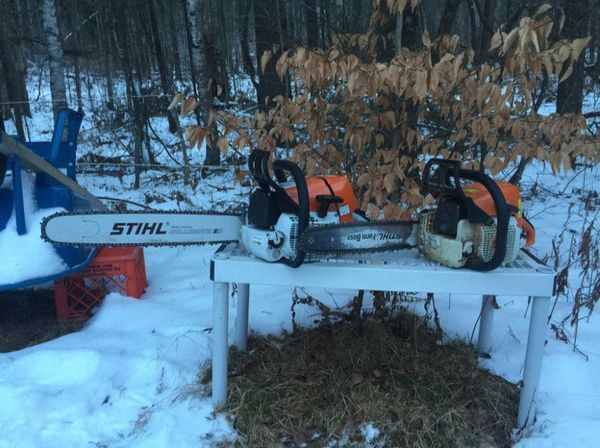
New chainsaw allows us to cut bigger trees
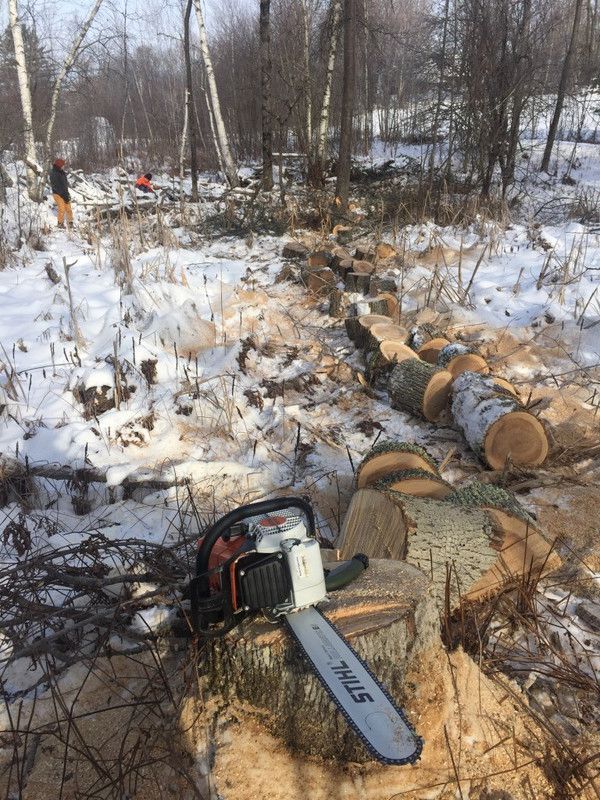
I am standing on top of a tree!
This took a few hours to cut and haul in the snow, and will take a few more hours to split with a maul.
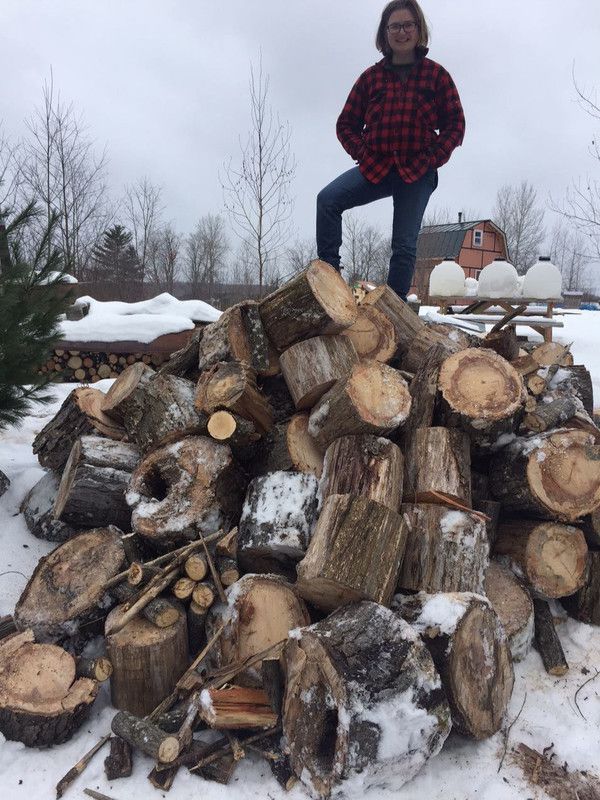
A couple of weeks ago, my husband helped a neighbor split wood with a log splitter. He was looking forward to spending time with our neighbor, hoping to get to know him better while lending a helping hand. He was fairly disappointed: the log splitter made a lot of noise, and the task was mind-numbingly repetitive. At home, we split with a maul: the task is more pleasant and can be done a little bit at a time. It takes a considerable amount of time compared to a log splitter, but you can talk and spend time with family, or just listen to the birds. It’s easier to treat it as daily exercise rather than a once-a-year body crushing chore.
We are all getting pretty good at it, even our 6 year old son, Robin.
Shingling of one wall
Putting the very last few tiles on the wall
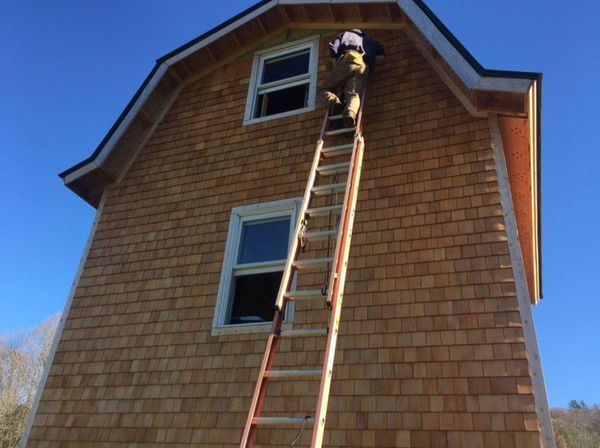
The very next day, we had our first snowstorm
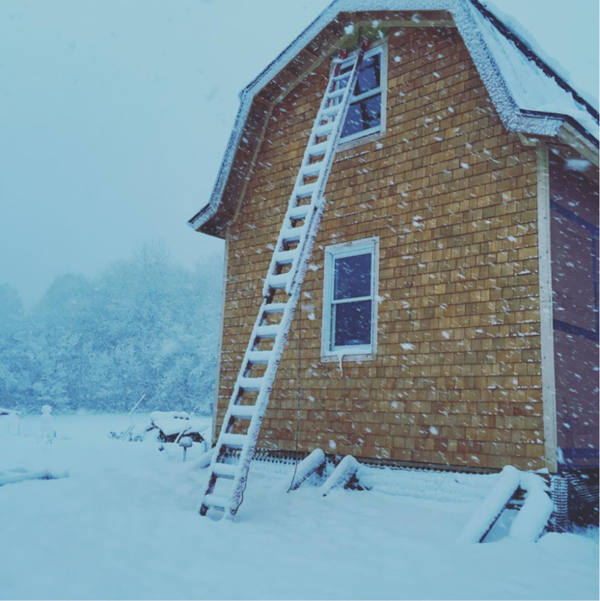
Craft fairs & gifts
Every year, I sell crafts at two Christmas fairs in my community. I make a few different kinds of soaps, trying to keep the list of ingredients local and succinct, and add a few crafts. My friend Sarah and I have been making aprons for children. We spent months completely buried in her sewing room, fabric overflowing the room, and she would be sewing on her singer treadle sewing machine. We sold only a few aprons this year, and I bartered two for 10 lbs of venison.
New addition in my line of soap I offer: Lump of Coal Soap (recipe can be found here) & Lavender and Vanilla Soap
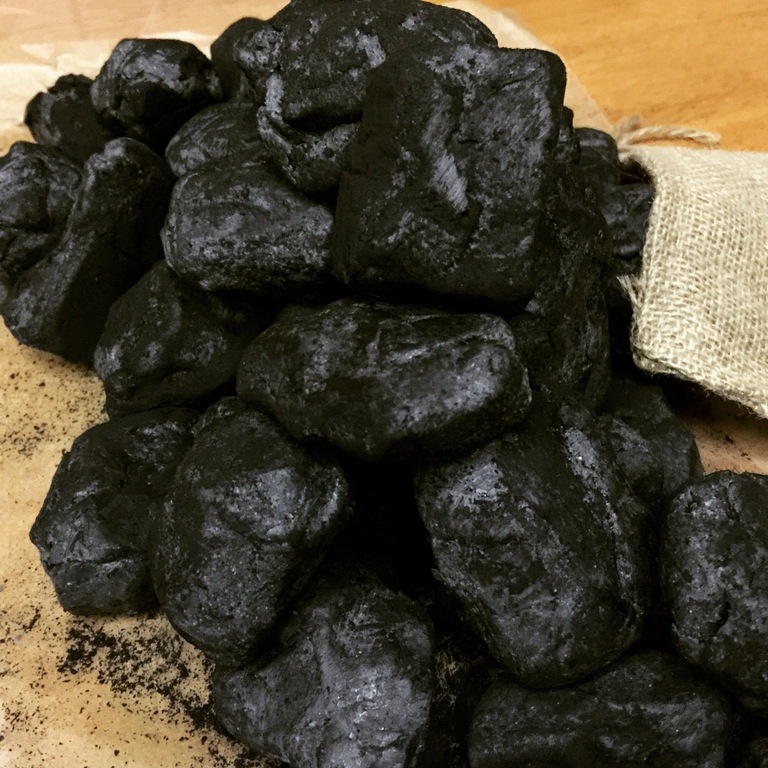
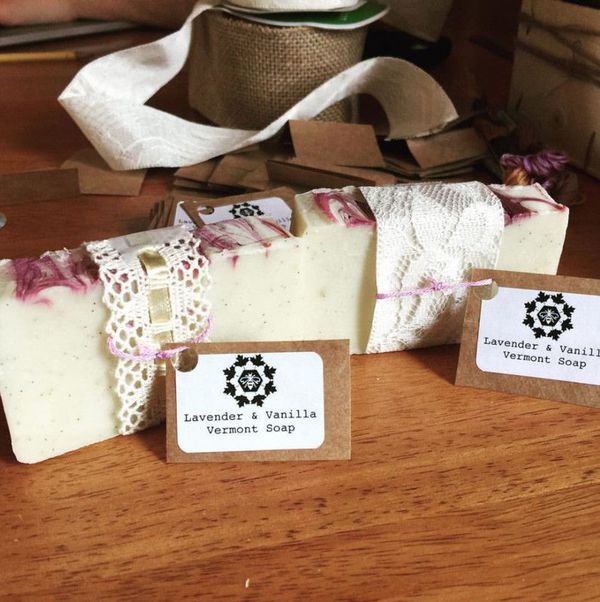
Some of the many aprons we have made
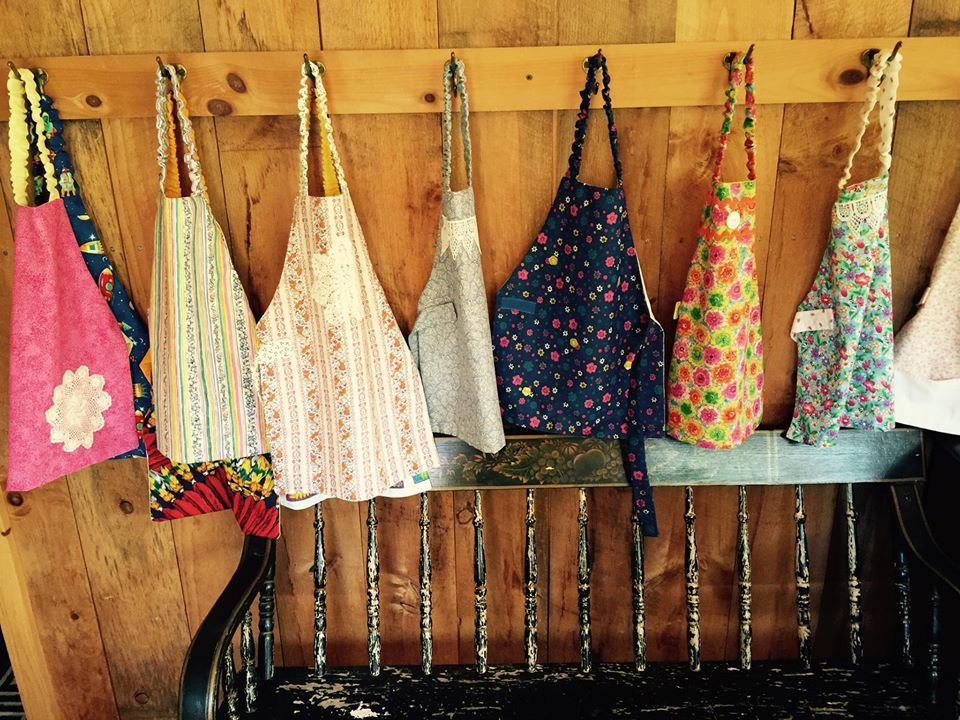
With the leftovers from the sale, I gifted soaps and lip-balms to family and friends. I also made socks for Sarah. This is the second pair I am making for her. Knitting socks is a lot of work, and she has been knitting socks for a lot of people, including us. Like most knitters, she rarely makes items for herself. She was very happy (I hope) with her gift, it was such a great thing to spend weeks thinking about her while making it.
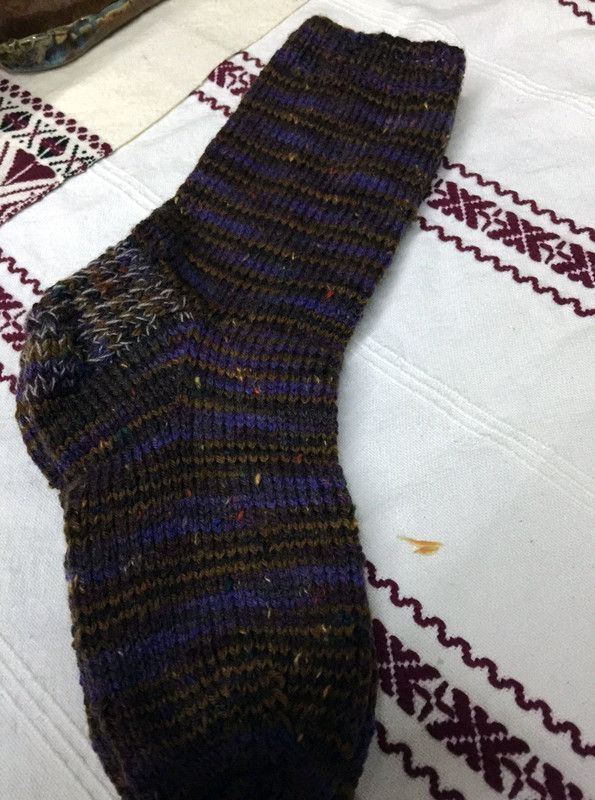
Electricity
We upgraded our batteries in our solar install. We also added a few LED lights upstairs and in the entrance/bathroom area.
We just upgraded our batteries from 3 * 35Ah lead acid (right) to 3 * 155Ah deep cycle AGM (left).
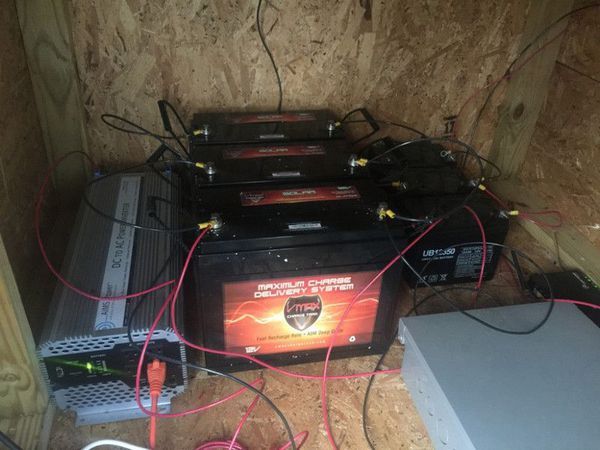
Snowstorms
We’ve had snow on the ground for weeks now, and we added the winter chores to our daily life.
Plowing with the ATV
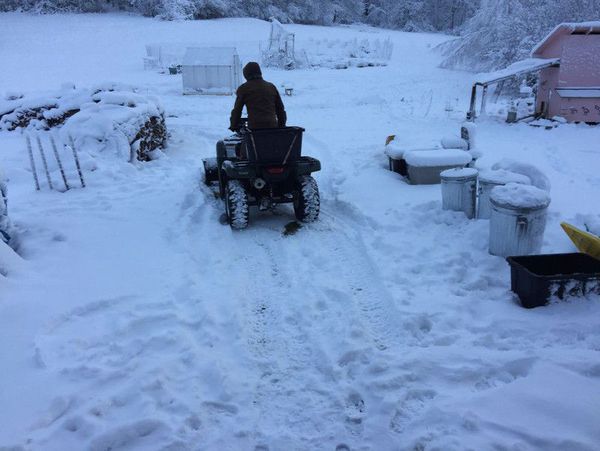
We snowshoe and pack the trails, to keep them maintained and to slow down the growth of vegetation once spring comes. Robin is a very cheerful helper, and the snow is nicely packed thanks to all the wiggling.
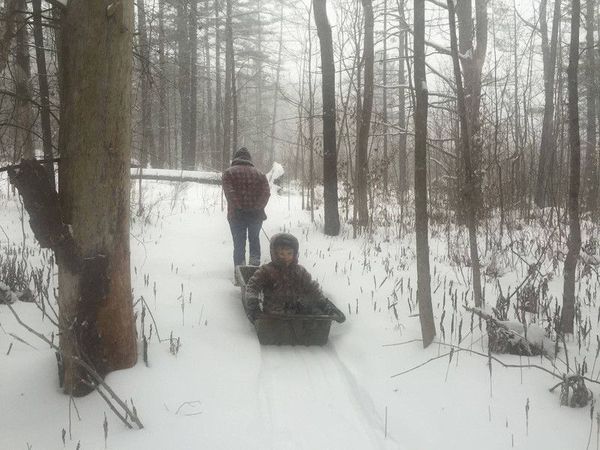
Chickens
Our chickens have stopped laying and are molting. It was pretty terrifying arriving one morning in the coop, and seeing piles of feathers on the ground, having lost chickens to predators in the past. Molting is a natural process, but it makes you wonder if they will survive the winter with so little feathers on their head. The coop is airtight, we add a lot of hay and straw and they perch in the middle of the coop. We don’t provide a heat lamp, we chose a cold hardy breed: Rhode Island Reds.
They don’t like walking in the snow, so I give them straw on their ramp and ground so they can access their water and food. I also like the idea that they might like to stretch their legs outside, but I am probably anthropomorphizing my chickens.
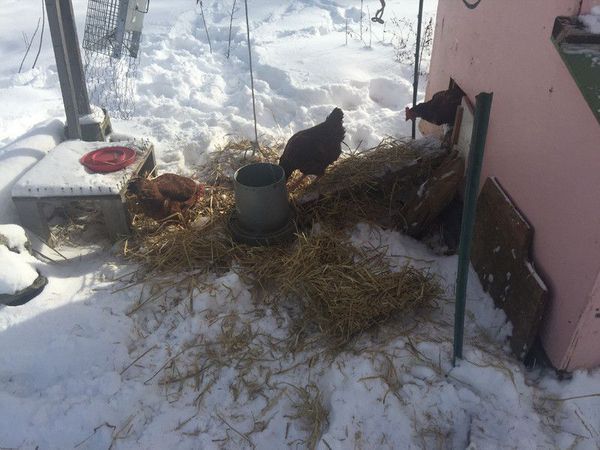
One of the downside of not having a heat lamp is that I need to bring them warm water every few hours. Sometimes in the afternoon, I bring them a few cups of my tea. They might be a little bit pampered.
Our friends Peter & Sarah gifted our chickens some feed for Christmas. These chickens definitely have a good life
